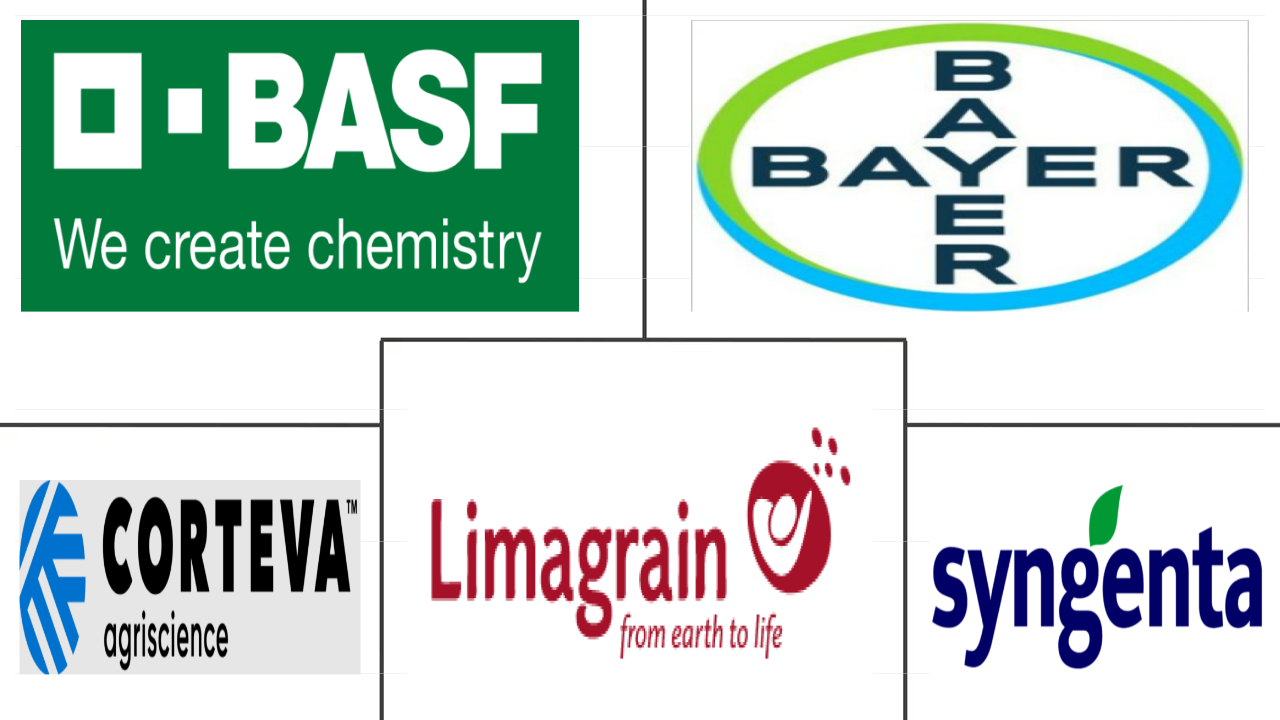Market Size of africa seed Industry
| Icons | Lable | Value |
|---|---|---|
|
|
Study Period | 2017 - 2030 |
|
|
Market Size (2024) | USD 3.12 Billion |
|
|
Market Size (2030) | USD 4.18 Billion |
|
|
Largest Share by Breeding Technology | Hybrids |
|
|
CAGR (2024 - 2030) | 4.98 % |
|
|
Largest Share by Country | Nigeria |
Major Players |
||

|
||
|
*Disclaimer: Major Players sorted in no particular order |
Africa Seed Market Analysis
The Africa Seed Market size is estimated at 3.12 billion USD in 2024, and is expected to reach 4.18 billion USD by 2030, growing at a CAGR of 4.98% during the forecast period (2024-2030).
3.12 Billion
Market Size in 2024 (USD)
4.18 Billion
Market Size in 2030 (USD)
5.30 %
CAGR (2017-2023)
4.98 %
CAGR (2024-2030)
Largest Market by Crop Family
48.44 %
value share, Grains & Cereals, 2023
It is the largest segment as Africa is one of the largest producers of sorghum globally. Rice and wheat are the staple food crops that were grown extensively.
Largest Market by Country
40.69 %
value share, Nigeria, 2023
It is one of the major producers of corn and other cereals in the region. Most of the corn area utilizes commercial seeds, contributing more to the market share.
Fastest-growing Market by Crop Family
6.40 %
Projected CAGR, Solanaceae, 2024-2030
It is the fastest-growing segment due to the increased production and growing demand from the processing industry and its adaptable nature to wider growing environments.
Fastest-growing Market by Country
6.10 %
Projected CAGR, Kenya, 2024-2030
The increasing demand for commercial seeds in Kenya is driven by the increasing area under cereals and vegetables, where the usage of hybrids and commercial seeds is high.
Leading Market Player
8.68 %
market share, Bayer AG, 2022

Bayer AG has invested heavily in product innovations and partnerships. Recently, it has introduced early matured and high-performance corn seed varieties in the African region.
Hybrids dominated the African seed market due to high yield and pest-resistance characteristics
- In 2022, hybrids had a higher share in the African seed market, accounted for 60.2% of the market. The high share of hybrids is due to the high yield and pest resistance.
- Non-transgenic hybrids accounted for 34.2% of the total seed market value in 2022. The non-transgenic hybrids' share increased by 3.4% in 2022 from the previous year.
- GMOs are gradually becoming a part of modern agriculture in Africa. Only 5 of 47 countries have approved the cultivation of GMO crops, including South Africa, Burkina Faso, Sudan, Egypt, and Nigeria.
- In an overall transgenic hybrid, herbicide-tolerant accounted for 42.7% of the African seed market in 2022. South Africa is the only country that allows herbicide-tolerant varieties. Soybean dominated the herbicide-tolerant transgenic seed market in South Africa, with a market share of 71.3% in terms of value, followed by corn (27.1%) and cotton (1.6%). In Africa, the area under herbicide tolerance was 297,607 hectares in 2022.
- In Africa, insect-resistant transgenic hybrids dominated the transgenic seed market by holding 57.3% of the market share value in 2022. South Africa had the largest insect-resistant transgenic seed market, with a market share of 92.1%, followed by Egypt with 6.8% in 2022.
- In 2022, out of the total seed market in Africa, the open-pollinated varieties and hybrid derivatives seed market accounted for 39.8% in terms of value. The area under open-pollinated varieties and hybrid derivatives in Africa was 30 million hectares in 2022, an increase of 8.1% since 2017 because of the low cost and usage of seeds for the next season. Moreover, the region has a high number of small-scale farmers, they mainly depend on local seeds such as OPVs for farming. Therefore, the demand for OPV's seeds is projected to increase in coming years.
Nigeria dominates the African seed market due to a high level of technological adoption and large cultivation land.
- In 2022, the seed market of Africa reached USD 2.81 billion. The surge in the adoption of innovative technologies is a significant driver in this segment. Row crops hold a dominant position in Africa's seed market. It accounted for 78.0% of the market value, primarily due to the extensive cultivation area and high consumption of these crops.
- Nigeria held a major market share of 40.7% in Africa's seed market in 2022 because the country has a high level of technological adoption in agriculture. This includes precision farming techniques, the use of genetically modified crops, and advanced irrigation systems. Therefore, it is anticipated that the seed market value will grow during the forecast period, registering a CAGR of 4.9%.
- South Africa accounted for the second largest share in the African seed market, with a value of USD 772.2 million in 2022. This was because row crops such as corn, wheat, sorghum, and other row crops are highly grown due to high consumption and demand from processing industries.
- The area under cultivation increased by 7.3% between 2017 and 2022, reaching 275.2 million hectares. This growth was driven by favorable climate conditions, such as adequate rainfall or improved soil fertility, which encouraged the expansion of agricultural land in the region.
- In Africa, the protected cultivation segment had a share value of less than 0.01% of the total seed market in 2022 due to less government support for setting up new greenhouse structures, lack of technical support and skills, and limited access to investment funding is a major obstacle to the adoption of protected cultivation techniques by African growers.
- The rise in cultivation land and growth in adopting innovative technologies are estimated to drive the African seed market during the forecast period.
